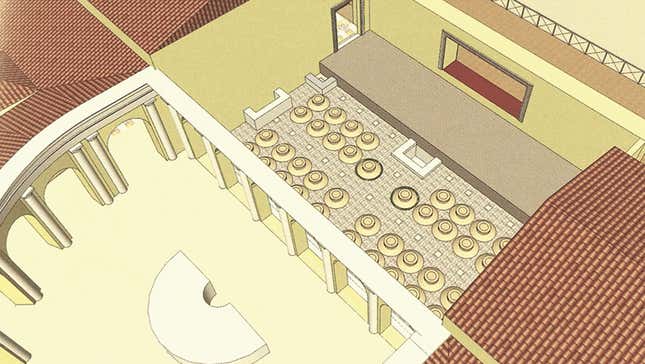
The room containing the dolia was surrounded by viewing areas.Illustration: D. Booms
Archaeologists have discovered the remains of an 1,800-year-old winery at the Villa of the Quintilii outside of Rome. By the team’s measure, the winery was designed as much for the spectacle of wine-making as the practice itself.
Decorated rooms around the winery appear to have hosted guests who would observe the wine-making process, the researchers found, and the finishes (including marble floors) seem installed for appearances over practicality. The team’s research is published in Antiquity.
“Agricultural labor was romanticized by the ruling classes of many ancient cultures, especially as it was often the source of both their wealth and status,” said Emlyn Dodd, a researcher at the Institute of Classical Studies at the University of London, in an Antiquity release.
“The excavations at the Villa of the Quintilii reveal to us how ancient Roman elites reimagined the annual vintage as a ‘theatrical’ performance, prioritizing the experience of those observing over the practical needs of the workers,” Dodd added.
Check out the ruins of this remarkable winery-turned-tourist-attraction.
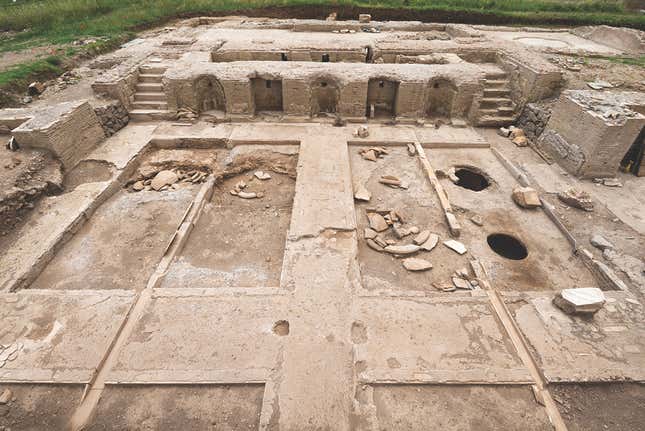
A view of the winery from above.Photo: S. Castellani, after Paris et al. 2019: 71)
This view of the site from the northwest shows the cella vinaria in the foreground and the treading floor and presses behind.
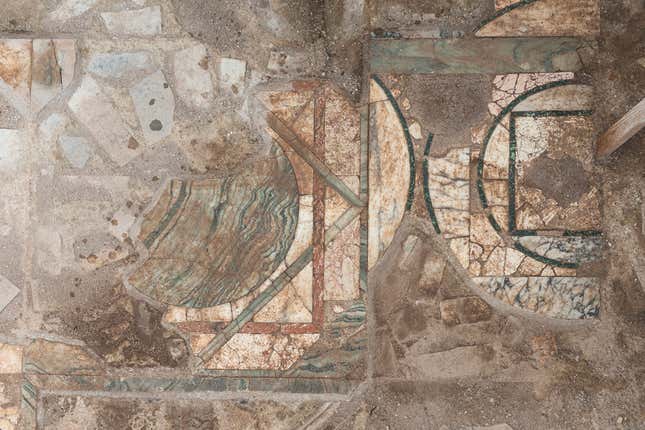
Opus sectile pavement in a villa dining room.Photo: S. Castellani, after Paris et al. 2019: 72
The pavement is in an opus sectile style, popular in Rome in the late second and early third centuries. The archaeologists found no evidence for activity on the site after the Gordian period, which ended with the deposition of Gordian III in 244 CE.
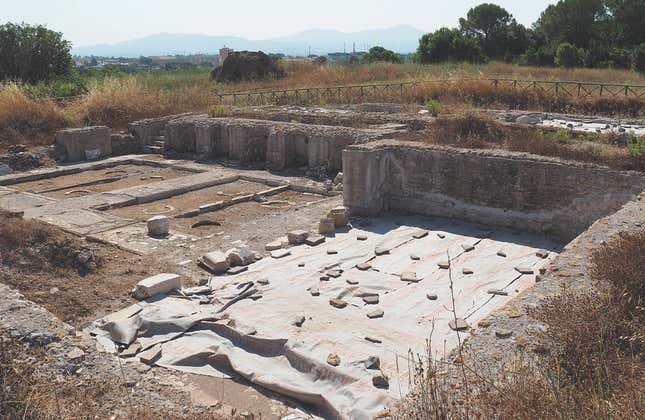
The winery as seen from the western dining room.Photo: E. Dodd
The winery’s cellar was surrounded on three sides by rooms that the archaeological team deemed unrelated to the production process; in other words, rooms for visitors to appreciate the winemaking process. The rooms had wide entrances that opened into the cellar, perfect for an audience.

The cella vinaria with dolium rims.Photo: E. Dodd
The cella vinaria (literally, wine cellar) would’ve featured dolia, or large jars used to contain the wine. Now long gone, this image shows where the dolia would’ve sat in the room.

The room containing the dolia was surrounded by viewing areas.Illustration: D. Booms
A model of the villa shows how adjacent rooms looked in on the room where wine was held.

An aerial photograph of the Villa of the Quintilii.Image: M.C.M s.r.l, modified from Frontoni et al. 2020: fig. 3
In this image, one can see the treading area (A), press beds (B1, B2) and possible press rooms (C1, C2), the collection vat (D), the wine cellar (E), and dining rooms (F1, F2) of the villa.
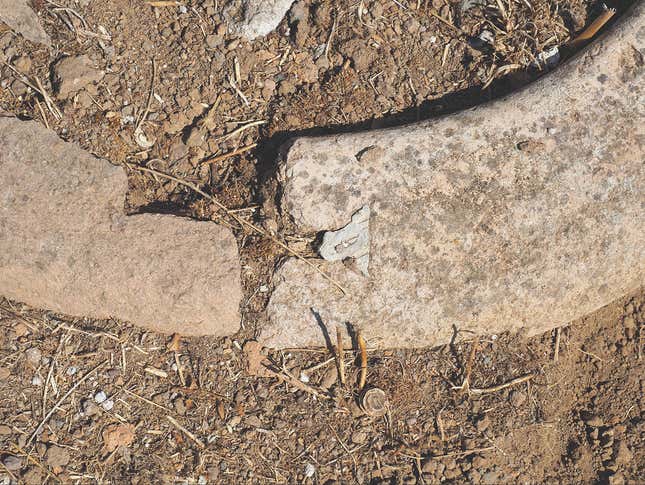
A lead double dovetail clamp in a dolium rim.Photo: E. Dodd
The rim of this dolium was evidently repaired in the ancient past: a lead double dovetail clamp sits in the rim and was commonly used in Roman times to fix up the vessels.
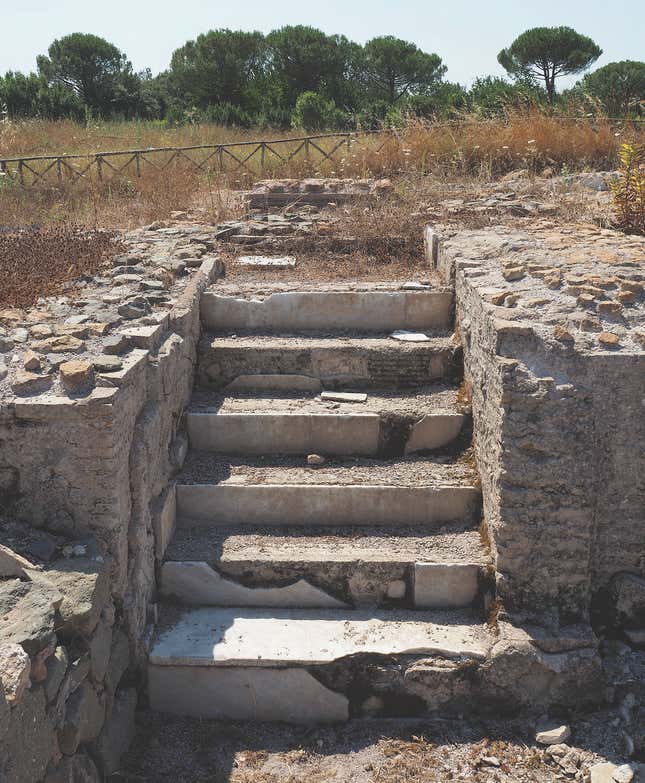
Marble facing on a staircase at the winery.Photo: E. Dodd
Marble facing on this staircase is still intact. The staircase led from the cella vinaria to the treading and press areas of the winery.


















 English (United States) ·
English (United States) ·